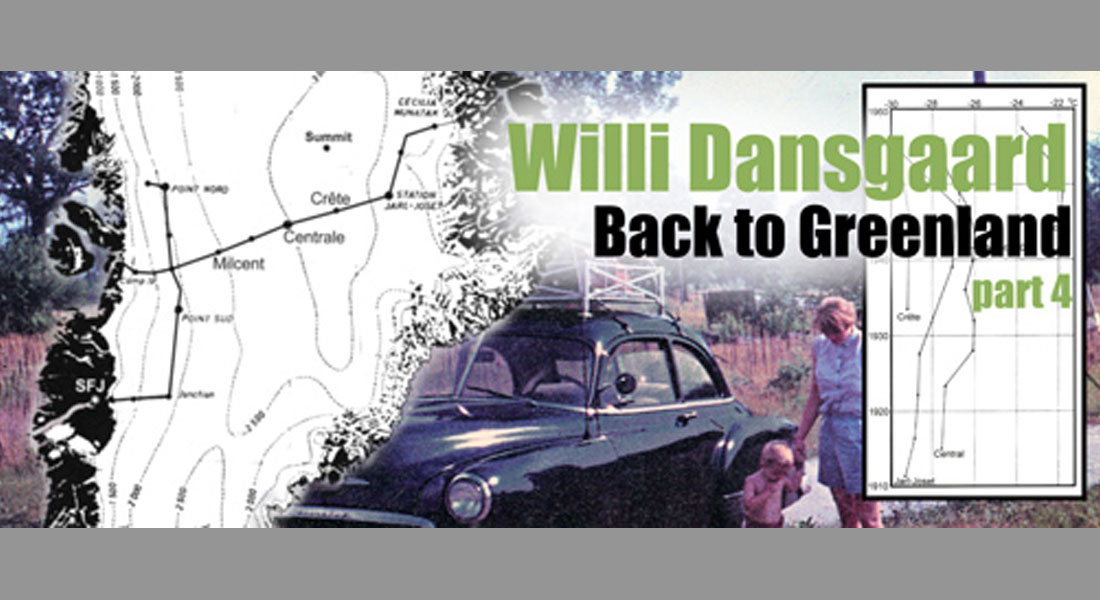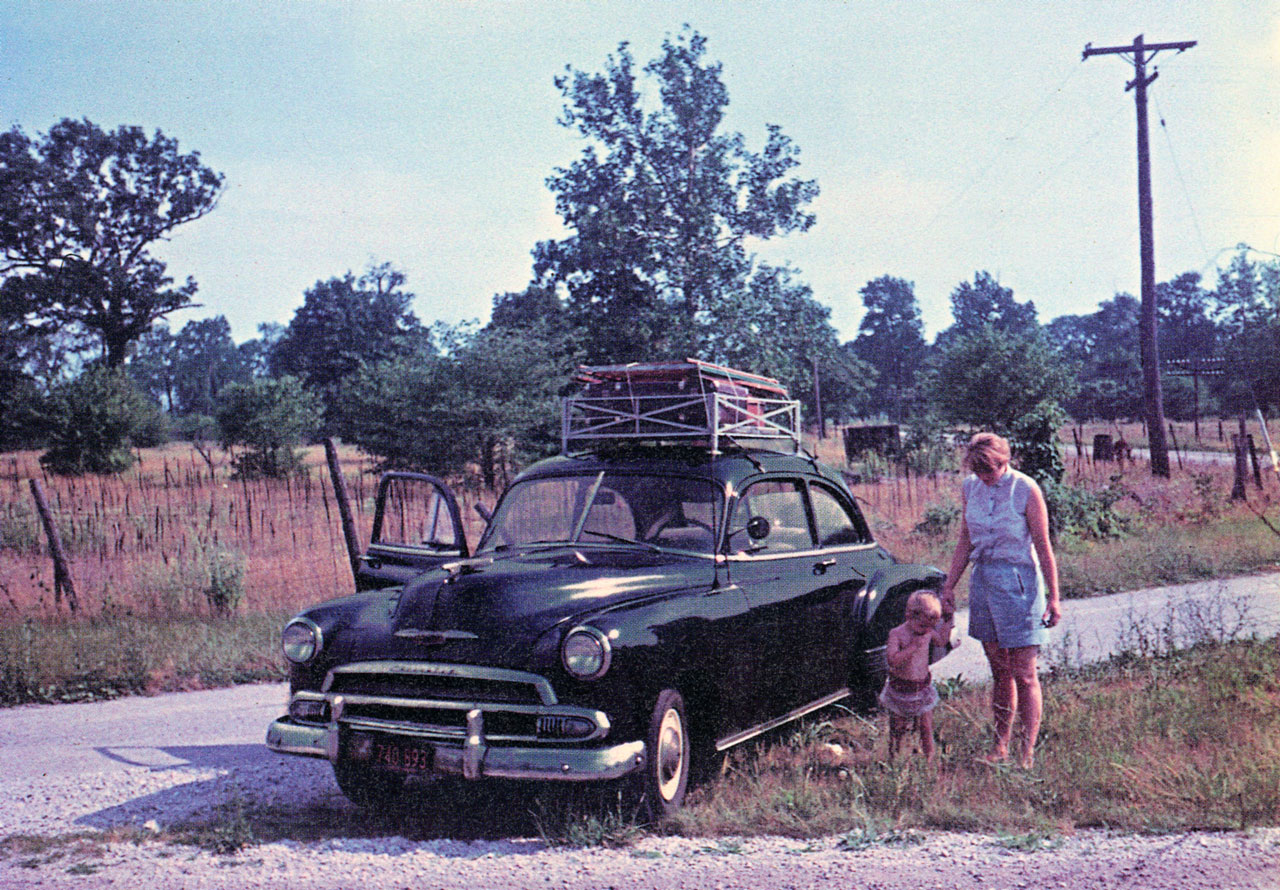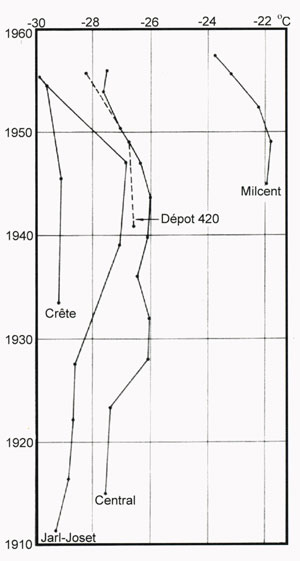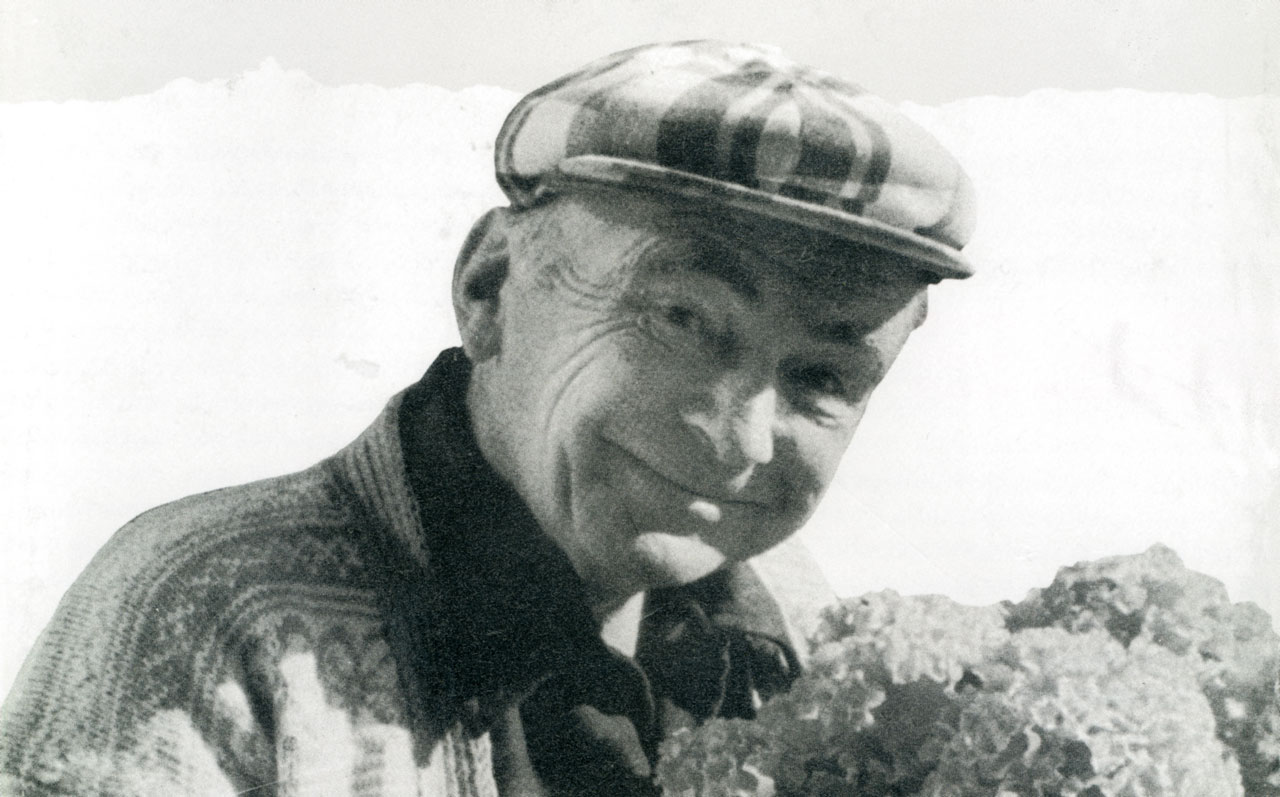Back to Greenland
Willi Dansgaard gets his good idea in 1952 and in the years that follow he continues his studies of the relationship between temperature and the oxygen isotope composition in precipitation. But in early 1954 he is interrupted when he is offered a scholarship for a stay at the University of Chicago in the United States, where he is to study the interplay between science and industry in an American context.

”The happiest three months”
He wonders why he is chosen for the job and when the little family – which now also includes the one-year-old Finn – arrives, it turns out that it is soon a thing of the past.
Instead, he is offered a job in geology, but since this is not his field and he dreams of returning to the isotope studies, he is transferred to Professor M. Dole’s institute at Northwestern University just north of Chicago.
”M.D. enjoyed being able to boast that a student from Europe had come to the United States to study at his institute,” he writes, and Dansgaard was given free hand to continue his work collecting and measuring vapour and precipitation from different regions.

He discovers that the warm and humid air from the Caribbean had the highest isotopic values, polar air the lowest and air from the Atlantic Ocean had isotope values in the middle. ”All in all, results that could certainly stand to be published, even if there wasn’t talk of anything very spectacular,” he explains.
The family complete their stay in the United States with several months of touring the country, where they sleep in the car and visit distant family and several national parks. They return home to Copenhagen October 5, 1955 after what Dansgaard describes as “the happiest three months of our life."
Greenland Expedition EGIG
A year after returning from the United States, Dansgaard begins to hear rumours about a large joint European Greenland expedition being planned, which had been brewing for some time, the so-called Expédition Glaciologique International au Groenlande or commonly called EGIG, where there were plans for a number of small drillings of between 10 and 20 meters in the ice sheet.

Dansgaard has not forgotten his idea to measure past climate via glacial ice, so he quickly realises how important this could be for his research. He contacts the Danish representative in the steering committee to ask whether they have plans for isotopic measurements of the cores and when the answer is negative he joins the expedition as a researcher. In 1959, the samples begin to arrive.

The expedition is a great success in every way and Willi Dansgaard uses the samples from the ice cores to create the world’s first isotopic climate curve, which, as expected, shows a warming from 1920 – 1945, but then surprisingly shows signs of cooling.
He confirms the trend with other researchers and in 1965 Dansgaard, along with the geologist Anker Weidick, writes a cautionary article with the title: ”Climate Deterioration in Greenland?”, which later turns out to be correct.
How do you date an iceberg?
In the mid-1950s, another gifted scientist who also works with ice research, namely Pete Scholander, contacts Willi Dansgaard. He has gotten the idea that you could possibly date glaciers using carbon-14 analysis of the air trapped in air bubbles in the ice and when he hears about Dansgaard’s research he invites him on an expedition to Norway and Greenland in 1957.
The expedition is a success and the theory seems to be confirmed and Willi Dansgaard mentions his idea of determining past climate using old glacier ice, but Scholander is not interested. ”You find the best climate under the covers,” he says offhandedly.
However, the positive results mean that they immediately get funding for a new expedition the following year, known as the “Bubble Expedition”, which will be of great importance for Dansgaard’s research.
Pete Scholander

He was an unorthodox thinker who asked good questions and often found good answers: Why aren’t arctic animals snow blind? Why doesn’t edema develop under the sharp folds of skin on a lizard? How can a swarm of fireflies figure how to blink synchronically? What are the pressure conditions in penguin bones?
His idea to date ice using carbon-14 measurements of air bubbles in the ice was the basis for several expeditions Dansgaard took part in.
